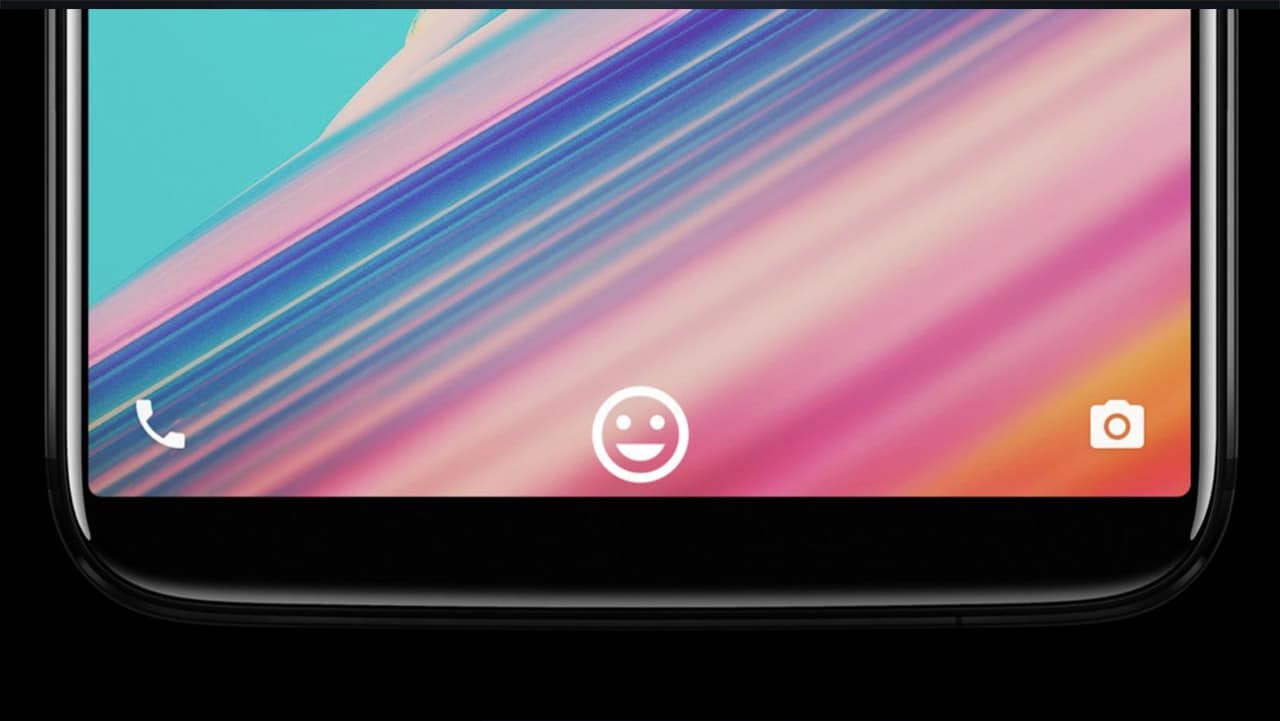News
OnePlus 5T is everything we expected it to be

Thanks to some teasers and “accidental” leaks — plus clear similarities to the already-launched OPPO R11s — the OnePlus 5T’s announcement didn’t surprise us that much, but this is still a notable upgrade over the OnePlus 5 released earlier this year.
The clearest difference is the switch to a larger 6-inch 1080p AMOLED display without adding much to the phone’s dimensions. Because it uses a slimmer 18:9 screen ratio, the handset looks taller now and has shorter bezels on both the bottom and top.
This also means that the fingerprint scanner had to be moved to the back. Like all other phones with this new design, facial recognition is one of the available security features. But unlike several new handsets, the audio port is still around.
Its dual-camera setup at the back (with 20- and 16-megapixel sensors) looks like its predecessor’s, but the implementation is slightly different. The secondary sensor has a brighter f/1.7 aperture and Intelligent Pixel Technology to combine four pixels into one for greater clarity.
There wasn’t any mention of optical zoom like on the OnePlus 5, and electronic image stabilization was chosen over its optical counterpart. A 16-megapixel image sensor handles selfies in front.
Like any OnePlus smartphone, flagship-level specs are in tow: a high-end Snapdragon 835 processor, 6/8GB of memory, 64/128GB of storage, and a 3300mAh battery. As usual, the company’s blazing fast Dash Charge is on board. It’s still on Android Nougat with Oreo coming in beta form by the end of the year.
Those don’t sound so special after all the premium smartphones we’ve been seeing lately, but if you take the prices of US$ 499 (EUR 499, GBP 449, INR 32,999) for the 64GB storage variant and US$ 559 (EUR 559, GBP 499, INR 37,999) for the 128GB storage model into consideration, this is yet another swell deal from OnePlus.
As announced before the official unveiling, the OnePlus 5T will become available in North America and Europe beginning November 21. Those in India will also get a chance to purchase a unit on November 21 through a flash sale, and China won’t have too wait much longer with their December 1 sale date.
SEE ALSO: OPPO R11s hands-on and photo comparisons
[irp posts=”24043″ name=”OPPO R11s hands-on and photo comparisons”]

News
Xiaomi Redmi A3 Philippine pricing, availability
Budget smartphone with high refresh rate display

Xiaomi is bringing high refresh rate displays to its budget line with the announcement of the Redmi A3. The latest addition to the entry-level Redmi line boasts of an expansive 6.71-inch HD+ display with up to a 90Hz refresh rate.
The Redmi A3 is available in Midnight Black, Star Blue, and Forest Green. The smartphone is priced at PhP 3,399 (3GB+64GB) and PhP 3,999 (4GB+128GB) respectively for its two configurations.
Customers may preorder the phone until April 27 via Lazada, Shopee, and TikTok. General sale begins April 26th in all Xiaomi stores nationwide. Freebies are a Basic Piston Earphone for online purchases and a 3-month Viu Premium subscription for in-store purchases.
The Redmi A3’s immersive screen allows users to consume various content in high-definition with better smoothness, a boost for a phone of its price point. The screen has Corning Gorilla Glass 3 protection as well, and DC dimming to reduce blue light exposure.
The phone also sports a refined design that lets go of the iPhone-looking camera arrangement. Instead, the main camera is now in the middle as part of a watch face-looking setup similar to other Android phone offerings.
Speaking of, an 8MP main shooter highlights the back of the Redmi A3. In front is a 5MP front camera. The phone is powered by a MediaTek Helio G36 processor and runs on an Android 14-based OS. Furthermore, it has a 5,000mAh battery with 10W of USB-C charging.
Other handy Redmi A3 features for users to utilize include a 3.5mm jack, Face Unlock, and Fingerprint Unlock.
For the longest time, Google kept Pixel and Android behind two different teams. While the Pixel team dealt with devices made by and for the brand, the Android team ships a product meant for brands outside of the company’s purview. However, the days of separation are at an end. Google is officially merging its Pixel and Android teams together.
In a shocking announcement, the company has confirmed that the teams handling hardware and software will fall under a single team headed by Rick Osterloh. Prior to the merge, Osterloh was the senior vice president of devices and service, which was Google’s hardware branch. He will now oversee both hardware and software.
Because of the new leadership change, Hiroshi Lockheimer, former head of Android, will now move on to other projects within Alphabet. Of note, the change is not harsh for Lockheimer. He and Osterloh had been contemplating on the merge for a while.
Now, why the change? As is the case with everything today, it’s all because of AI. Speaking to The Verge, Osterloh explains that the merge will help with “full-stack innovation.” With how technology is these days, it’s now impossible to develop AI without having a close eye on hardware, such as in Google’s AI developments for the Pixel camera. Merging the teams will help streamline development, especially when hardware is involved.
Despite the change, outside brands, like Qualcomm’s Cristiano Amon, remains confident of Android’s capabilities outside of Google. Just expect more AI coming out in the near future.
Since the Pixel 6 series, Google continues to wow the market as one of the most unique camera designs available in the market today. This year, the brand’s Pixel 9 series might reinvent itself again with a slightly updated redesign.
Between the Pixel 6 and Pixel 8 series, Google introduced a wraparound camera island extending from the left edge to the right edge. While most smartphones today still use the traditional top-left island layout, Google’s lineup consistently grabs admiration from onlookers.
Now, according to an early leak (from Rozetked, via 9to5Google), Google might cut the camera island’s size before it reaches either side of the Pixel 9. The remaining chunk looks like a horizontal pill-shaped camera island right in the middle of the rear panel. It looks like a common camera island comically enlarged and turned on its side. Alternatively, it also looks like a webcam attached to a phone.
Based on the new leak, the new camera island will have three unknown lenses, the usual LED flash, and an unconfirmed sensor. Besides the different camera, the leak also confirms the usual tray of hardware on the side. There’s nothing too revolutionary.
As always, the Pixel 9 series is scheduled to come out in the fall of this year.
SEE ALSO: Pixel 9 series will reportedly come in four models
-

 Features1 week ago
Features1 week agoFortify your home office or business setup with these devices
-

 Events2 weeks ago
Events2 weeks agoStellar Blade: PlayStation taps cosplayers to play Eve for game’s launch
-

 Gaming2 weeks ago
Gaming2 weeks agoThe Rogue Prince of Persia looks like an ultra-colorful roguelite
-

 Accessories2 weeks ago
Accessories2 weeks agoLogitech unveils G Pro X 60 gaming keyboard: Price, details
-

 Gaming2 weeks ago
Gaming2 weeks agoStar Wars Outlaws release date revealed
-

 Reviews1 week ago
Reviews1 week agorealme 12+ 5G review: One month later
-

 Gaming2 weeks ago
Gaming2 weeks agoLenovo confirms development of a Legion Go 2
-

 Deals2 weeks ago
Deals2 weeks agoTCL P635 TV: Big savings for TCL’s anniversary



























